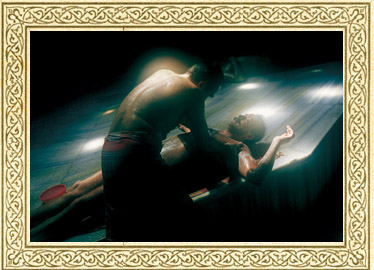
- Sexual Healthcare
- ORIENTAL MANHOOD THERAPY
- PROSTATE MASSAGE
HAMAM
Hamam literally means 'bathroom' in Arabic. In a communal setup, it is referred to 'bathhouse' which can be found in many other cultures similarly.
Today, hamam is synonymous to Turkish Bath, an ancient bathing tradition popular during the Islamic Ottoman Empire. Though the tradition is uniquely Turkish, in essence the practice extends far back to the Romans and has gone through an evolution with the local and Muslim practices to what the Turkish Bath is today.
The Turkish Bath was much more than just a place to cleanse the skin. It was intimately bound up with everyday life, a place where people of every rank and station, young and old, rich and poor, townsman or villager, could come freely. Women as well as men made use of the hamam, although of course at separate hours.
In the past, Turkish Bath was indeed an important aspect in the Turkish culture. There was Hospitality bathing by simply taking one's house-guest to the hamam fo a wash. Then there were the Circumcision, Groom's, and Off-to-the-Army bathings, and others besides.
The bath used to be a very elaborate process with bathers bringing along a list of articles to the hamam for the occasion. Nowadays, much of it have been very simplified while still keeping the essence of the bath experience: body scrub and massage.
In line with Islamic modesty, the men would cover up around their waist with a piece of cotton cloth called 'pestemal' (pesh-te-mahl). Similarly for the scrubber known as 'tellak'.
The bath begins with some gentle massage to loosen and and relax the muscles. Scrubbing followed next using the 'kese' (keh-seh), a rough cloth mitt, not only scoured the dirt out of the pores, but served to deliver a bracing massage. Finally, the body is rinsed off with plenty of foam and firm massage.
